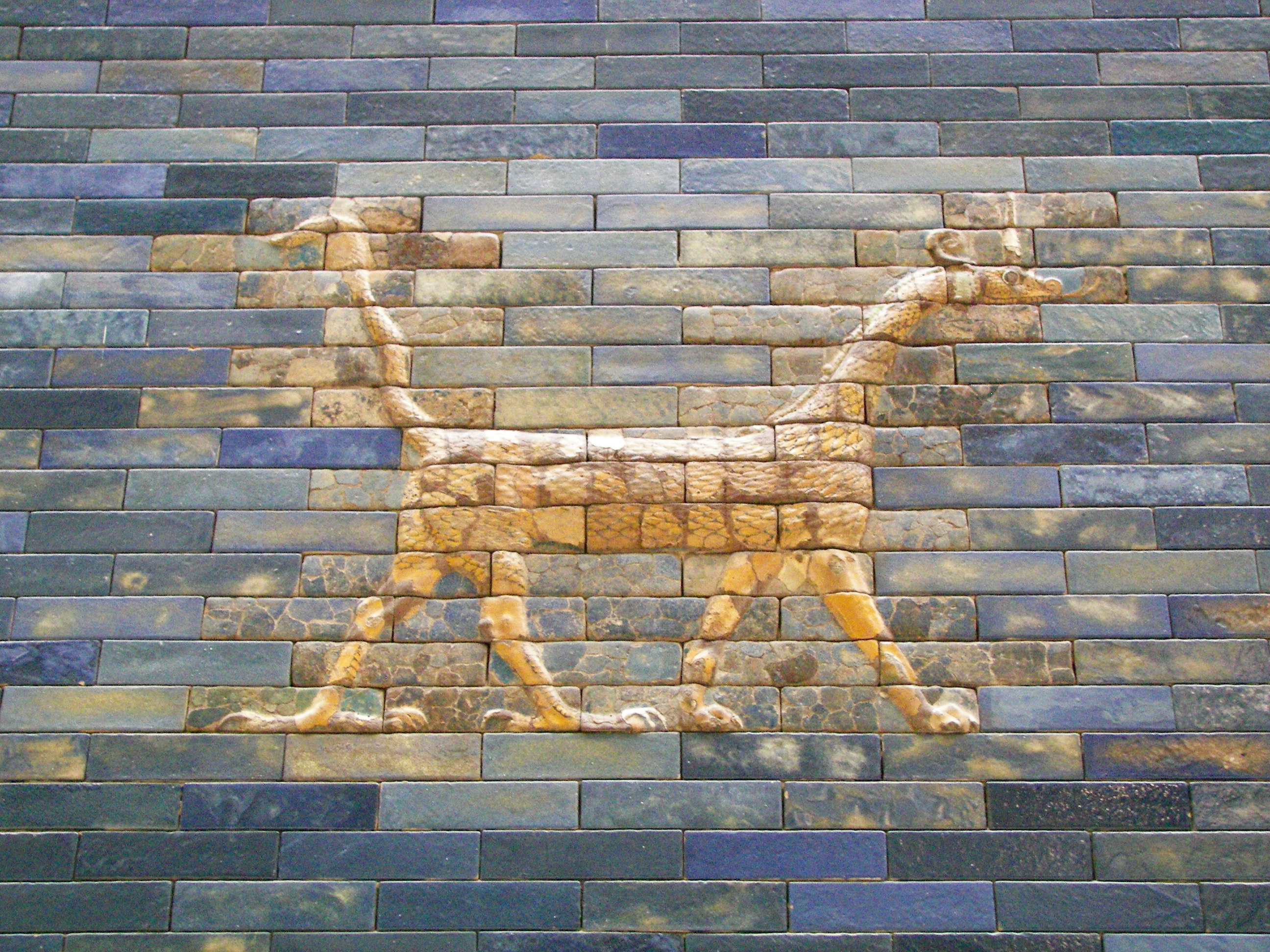- Sirrush
Infobox Paranormalcreatures
Creature_Name = Sirrush
Image_Caption = Sirrushbas-relief in thePergamon Museum .
Grouping =Legendary creature
Sub_Grouping =Dragon
AKA =
Similar_creatures =
Mythology =Babylonian mythology
Country =
Region =Mesopotamia
Habitat = Land
First_Reported =
Last_Sighted =
Status =The sirrush (or "mushhushshu") is a creature depicted on the reconstructed
Ishtar Gate of the city ofBabylon , originally dating to the 6th century B.C. It resembles a scalydragon with hind legs like aneagle 's talons and feline forelegs. It also has a long neck and tail, a horned head, a snakelike tongue and a crest. While not matching any known creature, some argue the sirrush could have been a genuine animal.Fact|date=August 2008The name
The name "sirrush" is derived from an Akkadian word loosely translated "splendor serpent." Although it is properly transliterated "muš-ḫuššu", [The Assyrian Dictionary, vol. 10 part II, p. 270.] early researchers mistakenly read it as "sir-ruššu", and this is the rendering most common today. The transliteration "muš-ruššu" is also found, apparently a variant of "muš-ḫuššu".
Theories about the sirrush
), leading him to speculate the sirrush was a creature the Babylonians were familiar with.
"
Bel and the Dragon ", adeuterocanonical Biblical text, relates a story that Koldewey thought involved a sirrush. In atemple dedicated to Bel (Nebuchadnezzar's god), priests had a "greatdragon or serpent, which they ofBabylon worship ed."Daniel , the Biblical prophet, was confronted with this creature by the priests, who challenged him to match his invisible God against their living god. Eventually, Daniel poisoned the creature. The creature's distinctly feline front paws seemed incongruous, and gave Koldewey some doubt. However, In 1918 he proposed that theiguanodon , (a dinosaur with birdlike hindfeet) was the closest match to the sirrush (Sjögren, 1980).Adrienne Mayor argues that ancient civilizations often took great care in excavating, transporting and reassemblingfossil s, raising the possibility that it represents a Babylonian reconstruction of sauropod remains. Thegriffin and othermythical creatures may have been based on similar reconstructions by this reasoning. However, science writer andcryptologist Willy Ley wrote that, as of the late 1950s, no fossil beds are known aroundMesopotamia . Others have noted a resemblance tomonitor lizard s, speculating that Babylonians may have seen or captured monitors and based the sirrush upon them.Ley suggested that the sirrush could be based on an animal that the Babylonians had heard of but that did not live in Mesopotamia. Ley claimed that bricks of a similar type to those of the Ishtar Gate have been found around Africa, suggesting that the Babylonians could have heard of or seen the animal somewhere else in Africa. The cryptozoologist
Bernard Heuvelmans contended that the sirrush was similar to a type ofdinosaur , the sauropods. Heuvelmans then suggested that the sirrush of the Ishtar gate and the persistent rumours of sauropod-like surviving dinosaurs inCentral Africa , for exampleMokele Mbembe are related, and that the sirrush is based on actual unknown reptiles living in Central Africa at that time and that may still be alive.Another possibility is the
Elasmotherium , or "Giant Unicorn" rhinoceros, another beast fitting the approximate description.Fact|date=March 2008ee also
*
Mokele Mbembe
*Living dinosaurs References
Bibliography
*Jerome Clark (1993). "Unexplained! 347 Strange Sightings, Incredible Occurrences, and Puzzling Physical Phenomena". Detroit: Visible Ink Press.
*Bernard Heuvelmans (1958). "On The Track Of Unknown Animals". New York: Hill and Wang.
*Willy Ley (1959). "Exotic Zoology". New York: Viking Press.
*Karl Shuker (1995). "In Search of Prehistoric Survivors." London: Blandford. ISBN 0-7137-2469-2
*Bengt Sjögren (1980). "Berömda vidunder", Settern ISBN 91-7586-023-6 sv iconExternal links
* [http://www.pibburns.com/cryptost/sirrush.htm Mushrushu (or Sirrush)] artwork from Ishtar Gate & lore
* [http://www.ishtartemple.org/IshtarGate.htm The Ishtar Gate]
* [http://www.newanimal.org/sirr.htm The Cryptid Zoo: Sirrush in Cryptozoology]
Wikimedia Foundation. 2010.
